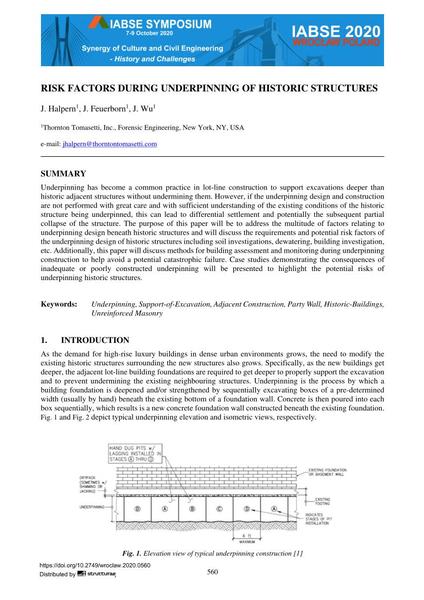Risk Factors During Underpinning of Historic Structures

|
|
|||||||||||
Bibliographic Details
| Author(s): |
J. Halpern
J. Feuerborn J. Wu |
||||
|---|---|---|---|---|---|
| Medium: | conference paper | ||||
| Language(s): | English | ||||
| Conference: | IABSE Symposium: Synergy of Culture and Civil Engineering – History and Challenges, Wrocław, Poland, 7-9 October 2020 | ||||
| Published in: | IABSE Symposium Wroclaw 2020 | ||||
|
|||||
| Page(s): | 560-568 | ||||
| Total no. of pages: | 9 | ||||
| Year: | 2020 | ||||
| DOI: | 10.2749/wroclaw.2020.0560 | ||||
| Abstract: |
Underpinning has become a common practice in lot-line construction to support excavations deeper than historic adjacent structures without undermining them. However, if the underpinning design and construction are not performed with great care and with sufficient understanding of the existing conditions of the historic structure being underpinned, this can lead to differential settlement and potentially the subsequent partial collapse of the structure. The purpose of this paper will be to address the multitude of factors relating to underpinning design beneath historic structures and will discuss the requirements and potential risk factors of the underpinning design of historic structures including soil investigations, dewatering, building investigation, etc. Additionally, this paper will discuss methods for building assessment and monitoring during underpinning construction to help avoid a potential catastrophic failure. Case studies demonstrating the consequences of inadequate or poorly constructed underpinning will be presented to highlight the potential risks of underpinning historic structures. |
||||
| Keywords: |
underpinning unreinforced masonry party wall Support-of-Excavation Adjacent Construction Historic-Buildings
|
||||
